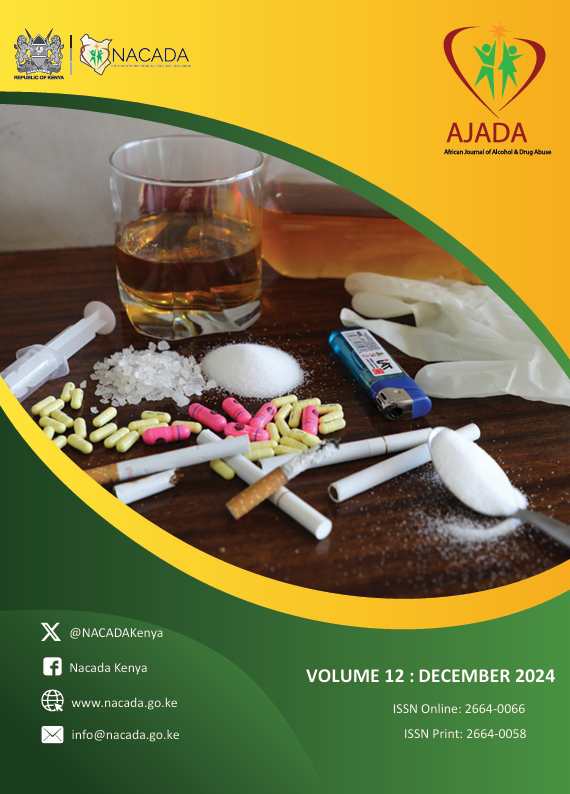Exploring where to concentrate smoking cessation efforts in Nigeria through the mirror of self-reported smoking
DOI:
https://doi.org/10.4314/ajada.v12i1.2Keywords:
Smoking cessation, Tobacco-use , Self-reported Smoking, Spatial analysis, NigeriaAbstract
Smoking is the largest cause of preventable health problems and premature death worldwide, and about 80% of the world's 1.3 billion tobacco users live in low- and middle-income countries. Tobacco smoking prevalence in Nigeria was 10.4% and it is estimated that there are about 20 million active smokers in the country. This study investigate the spatial pattern of self-reported smoking in order to determine potential targets for smoking cessation campaigns in Nigeria, utilizing a nationally representative dataset. This was a cross-sectional study aimed at investigating the spatial pattern of self-reported smoking as a means of determining where smoking cessation campaigns should be targeted in Nigeria, using spatial analysis and descriptive statistics to examine data from the first round of the Nigeria-National Survey on Drug Use and Health. The results indicated that over 80% of self-reported smokers were male, and young people aged 20-39 were majority (53.8%). Crop farming (24.7%) was the dominant profession. Benue (10.0%), Bauchi (6.3%), and Edo (5.5%) States had the highest number of smokers, and Ekiti (1.6%), Kano (1.3%), and Jigawa (0.7%) States had the least numbers. Self-reported smokers in the country tended towards clustering (Moran I=.126), and whereas Benue State was the hot-spot of smokers in the country, Katsina, Kano, and Kaduna States formed the cold spot. This study identified the age range, the predominant occupation, and the location of most smokers in the country, making possible focused smoking cessation interventions. However, a one-size-fits-all smoking cessation policy might not work in the country given the heterogeneous distribution of smokers.
Downloads
Published
Issue
Section
License
Copyright (c) 2024 Oluwaseun Addie

This work is licensed under a Creative Commons Attribution-NonCommercial-ShareAlike 4.0 International License.


